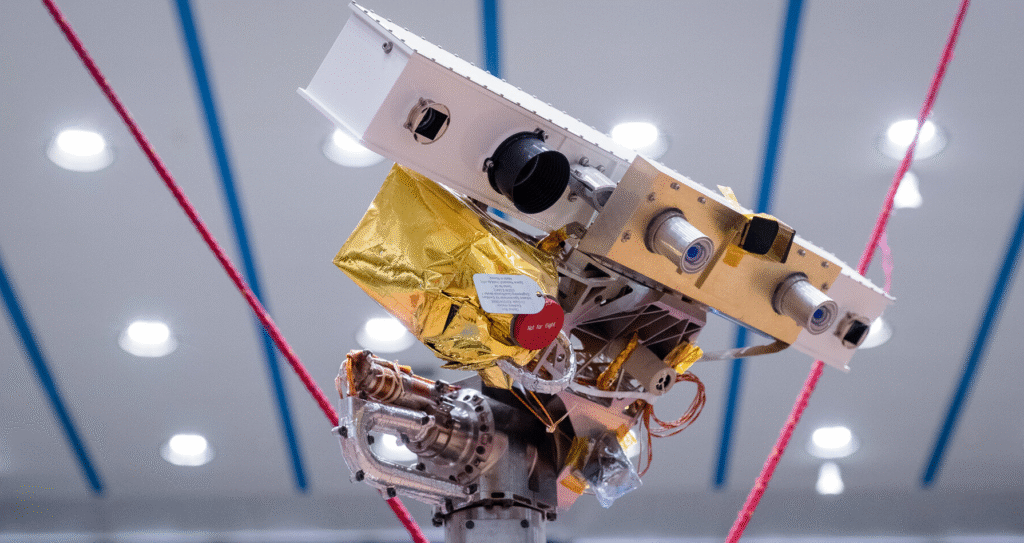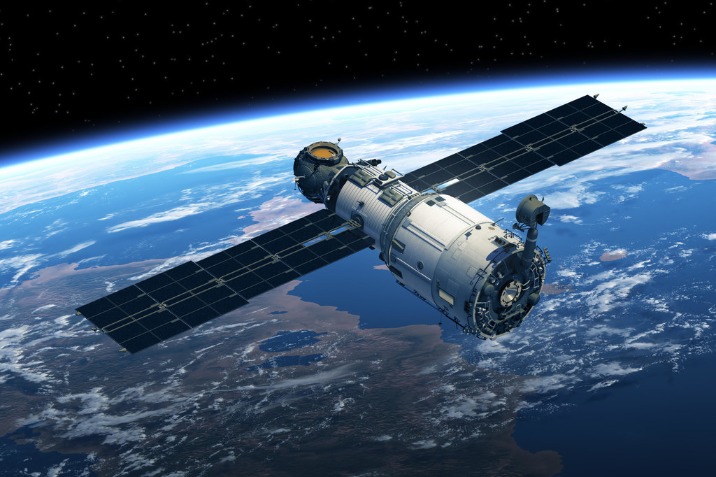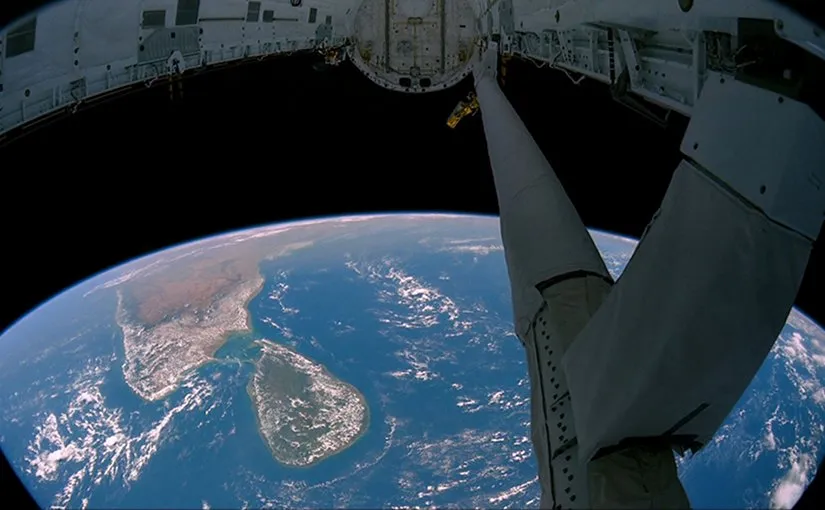Sri Lanka has long been known for its ports, highways, and strategic shipping routes. But a new idea is gaining traction among investors and technologists: can Sri Lanka position itself as a competitive launch and space-industry hub because of its low-gravity advantage?
The conversation is no longer hypothetical. With the emergence of new private players like Space Ceylon and rising regional interest in commercial space technologies, the question now carries real business weight. Global capital is actively seeking emerging locations for small-satellite launches, ground-station networks, manufacturing bases, and R&D clusters. As the world moves into a commercial space economy projected to exceed USD 1.8 trillion by 2040, Sri Lanka’s unique geophysical profile is becoming part of the strategic discussion.
This analysis explores whether Sri Lanka’s lower gravitational variation caused by its location near the equator creates an attractive commercial proposition for space-related ventures.
The Science Behind the “Low-Gravity Point”
Sri Lanka sits close to the equator, and due to Earth’s rotation and shape, gravitational acceleration is slightly lower at the equator than near the poles. The difference is not dramatic for everyday life, but it matters in aerospace.
Lower gravitational pull translates into: Less energy required to achieve the same orbital velocity. Reduced fuel burn in the initial ascent phase. Potential optimisation for small and medium-lift rocket systems. A more favourable environment for testing propulsion, avionics, and lightweight launch technologies.
While Sri Lanka does not have a “low gravity anomaly” that makes it unique globally, its equatorial position is commercially meaningful. Launches closer to the equator receive an extra “free boost” from Earth’s rotational speed, improving launch efficiency by up to 5-10%. This is a core reason why countries like the UAE, Singapore, Indonesia, and Brazil market equatorial launch opportunities.
Sri Lanka falls into the same geographic advantage zone an opportunity the country has never fully explored.
The Business Case for Equatorial Launch Advantage
Global commercial space companies are aggressively seeking cost reductions. Launch efficiency is directly tied to economics, and equatorial access is becoming strategic for three critical reasons:
Cheaper Satellite Deployment
Low Earth Orbit (LEO) constellations require thousands of satellites. Every kilogram that does not need to be burned as fuel directly improves cost-per-launch metrics.
Better Orbital Coverage for Telecommunications
Equatorial launches are ideal for satellites in geostationary orbit (GEO), the backbone of telecom, broadcasting, and defence. This sector remains profitable even in a fragmented global economy.
Growth of Micro-Launch and Small Rocket Startups
Asia is experiencing a surge in private aerospace companies building mini-rockets and low-cost launch vehicles. These firms do not require massive launch complexes only permissive airspace, regulatory stability, and logistical efficiency.
Sri Lanka, which already markets itself as a logistics and digital hub, could theoretically position itself for the next frontier of logistics: access to space.
Infrastructure and Policy Considerations
For Sri Lanka to become a credible player, geography alone is not enough. Three pillars must be prioritised:
1. National Space Policy and Regulation
The country requires: A clear space regulatory authority Licencing frameworks for launches, ground stations, and satellite operations A national space safety and insurance protocol Import/export and customs pathways for aerospace-grade materials
Without regulatory clarity, no serious investor local or foreign will commit capital.
2. Dual-Use Infrastructure Investment
Space infrastructure is not limited to launch pads. Investors look for: Test ranges for propulsion and aerodynamic systems Ground communications stations High-precision manufacturing parks High-speed digital connectivity Coastal surveillance and safety facilities
These exist partially in Sri Lanka but remain fragmented. With targeted development, PPP (public-private partnership) models could unlock significant investment.
3. Security and International Partnerships
Space operations are sensitive. Regional and global partnerships are essential for: Technology transfer Joint ventures in manufacturing Safety protocols and emergency procedures Insurance and risk-sharing
Countries like Japan, South Korea, and the UAE are already expanding their collaborative space ecosystems in Asia. Sri Lanka could position itself as a cost-effective collaborator.
Can Sri Lanka Compete With Regional Players?
The race for Asian space leadership is intensifying. Instead of competing head-on with India’s ISRO or Japan’s JAXA, Sri Lanka’s opportunity lies in occupying a niche.
Sri Lanka’s realistic competitive advantages:
Equatorial boost for launches
Relatively low operational costs
Emerging private-sector interest
Strategic Indian Ocean location
Undeveloped market meaning low entry barriers for innovators
Sri Lanka’s challenges:
Lack of regulatory framework
Limited local aerospace talent
High political and economic instability over the past three years
Slow government adoption of frontier technologies
Despite these constraints, the country has previously attracted high-tech investments in telecom, BPO, cybersecurity, and fintech. The pattern shows that with the right policy environment, Sri Lanka can scale into advanced sectors.
The Rise of Private Players: Why It Matters
The global shift from government-led space missions to private-sector innovation is reshaping the industry. SpaceX, Rocket Lab, Gilmour Space, and a dozen Asian startups have proved that commercial aerospace is profitable and scalable.
Sri Lanka’s private sector is already showing early signals: Startups exploring satellite data services Early-stage R&D in propulsion and orbital systems Sri Lankan engineers working at leading aerospace firms abroad Local investors showing interest in frontier technologies
Could Launch Ports Become the Next Sri Lankan Export?
Sri Lanka already monetises its geographic location through: Ports (Colombo, Hambantota) Aviation (Katunayake, Mattala) Fibre optic landing stations Shipping routes Global trading corridors
A spaceport whether terrestrial or offshore would be a natural extension of this logic.
Potential revenue streams:
Launch service fees
Satellite placement fees
Technology leasing
Aerospace manufacturing exports
Telemetry and tracking services
Data analytics and earth observation services for agriculture, weather, and defence
Even a small launch facility targeting micro-rockets could produce significant long-term value, especially as satellite networks expand.
The Strategic Role of the Indian Ocean
The Indian Ocean is becoming a major geopolitical competition zone. Space assets surveillance, telecom, defence, maritime tracking are increasingly vital. A space-capable Sri Lanka could become a regional node for:
Maritime intelligence Communication networks Climate and disaster monitoring High-precision satellite imagery for ocean traffic
This has military implications, but also large-scale commercial applications. Sri Lanka could become a neutral, non-aligned service provider similar to how it currently operates in telecom connectivity.
Conclusion: A Frontier Worth Exploring
Sri Lanka’s mild low-gravity advantage, driven by its equatorial location, is not a magical competitive edge but it is a commercially relevant one. When combined with strategic geography, low operating costs, and a growing appetite for innovation, Sri Lanka has a legitimate opportunity to enter the global space economy.
The transformation will not happen overnight. It requires policy discipline, investor-friendly regulation, and strong private-public collaboration. But the countries that seize early positions in frontier industries always enjoy disproportionate rewards later.
Sri Lanka has the rare chance to become more than just a logistics hub it can become a launchpad for Asia’s next generation of space innovation.
If the right players act now, the sky will not be the limit.



Lanka Biz News covers the intersection of innovation, investment, and impact in Sri Lanka’s dynamic business landscape. Follow us for more on emerging sectors shaping the island’s future.





